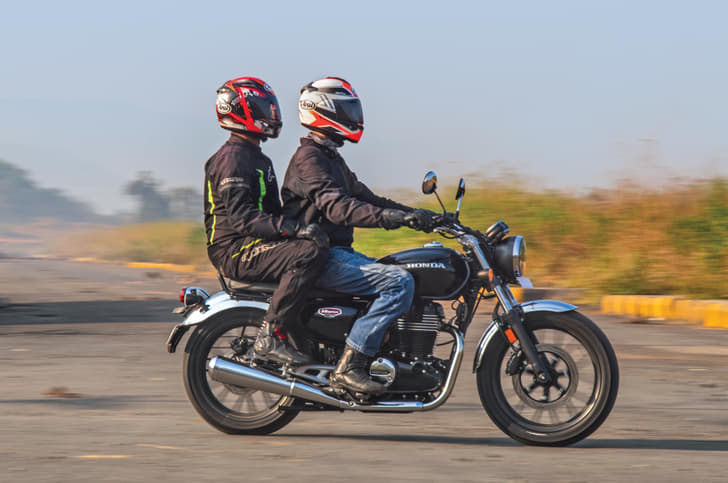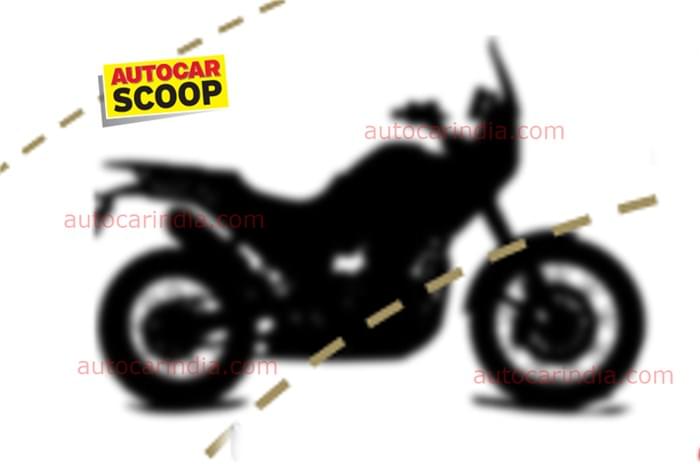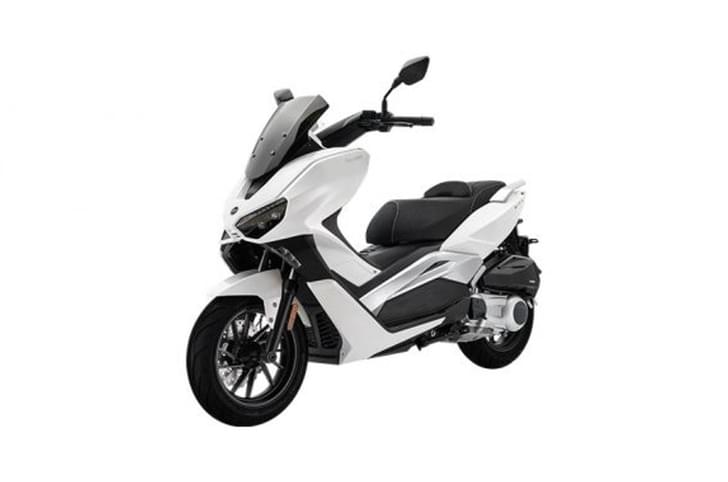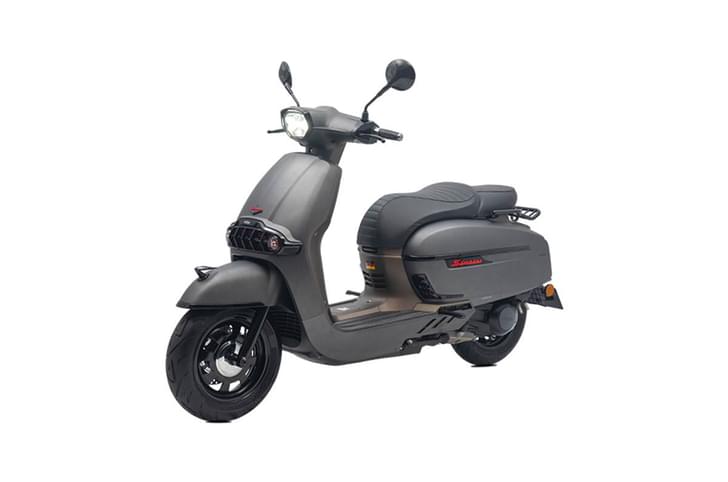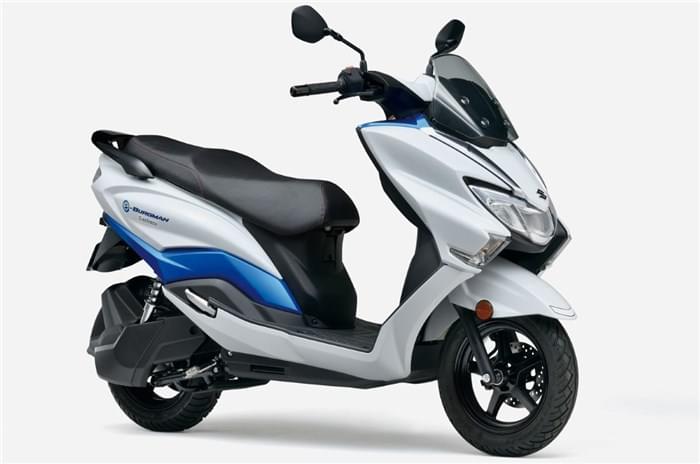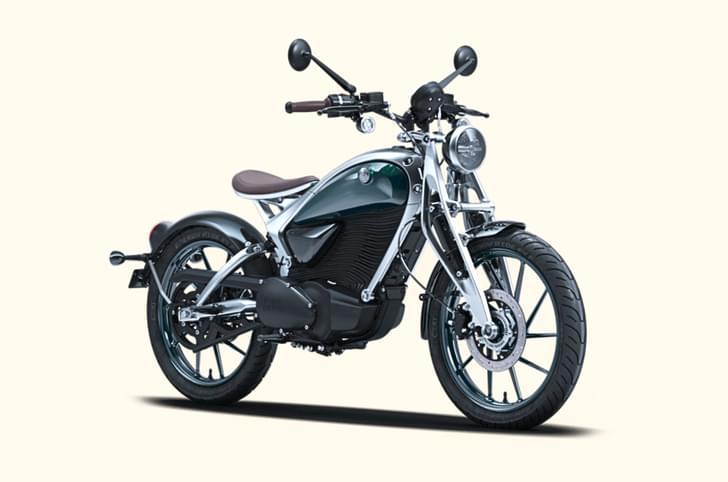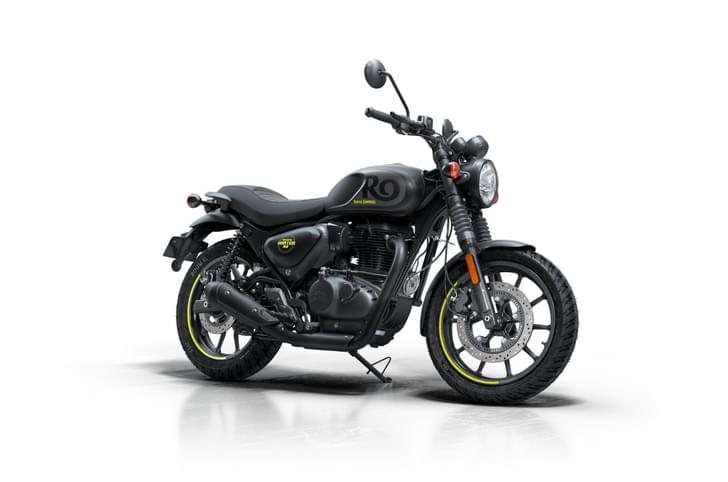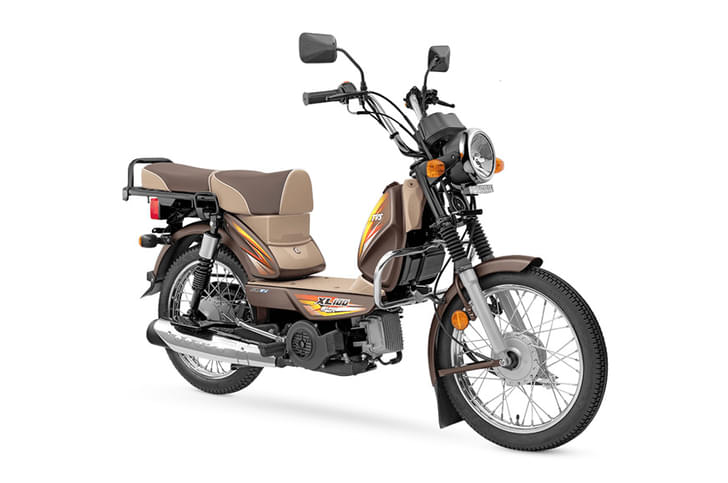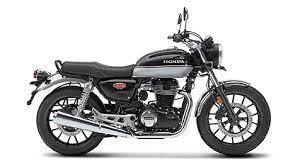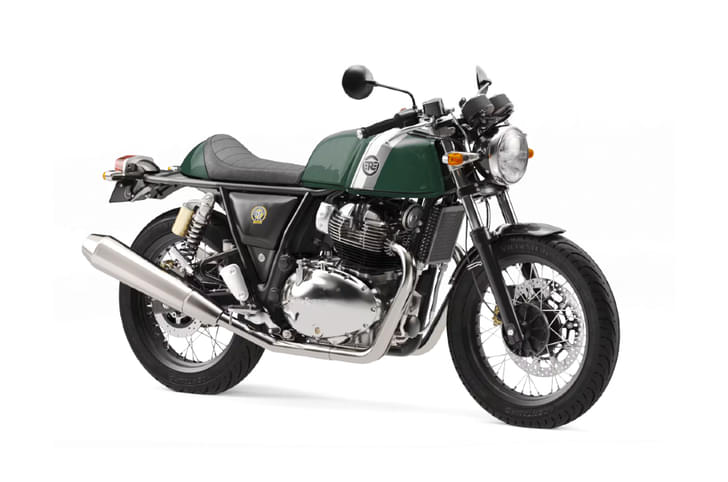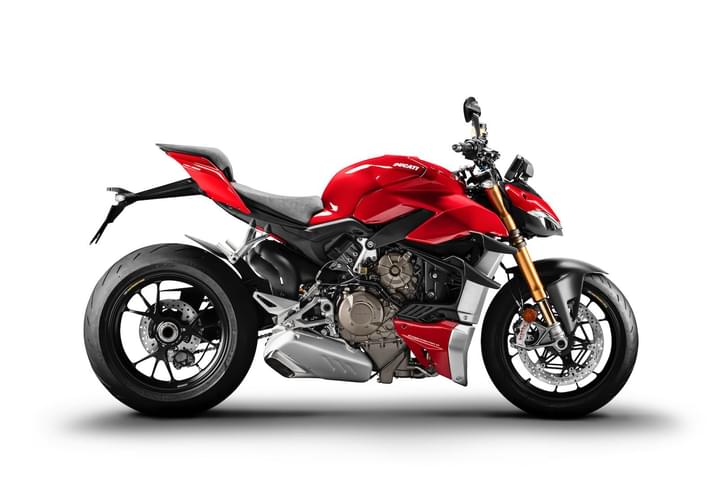Chances are that if you’ve loved motorcycles from the time when you were a child, litre-class superbikes would’ve featured as posters on your bedroom wall, or on your list of must-haves at some point in your life. And while the prospect of riding these machines is incredibly alluring, the unfortunate truth is that, from a real-world usability standpoint, they’re impractical to the extent of being nearly pointless, especially in our country. Plus, none of us are looking forward to visiting the local chiropractor after spending the day crouched in a foetal position on a superbike. Experience has taught me that what you’ll find to be far more usable (and affordable!) are sport nakeds – motorcycles that marry performance and usability like nothing else.
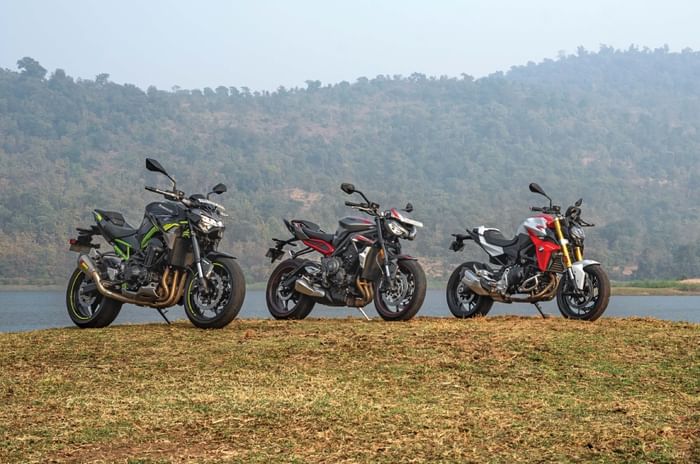
The BMW F 900 R is the newest addition to the middle-weight sport naked segment, one that’s dominated by the Triumph Street Triple R and the Kawasaki Z900. These are three rather different motorcycles with three different personalities and so we decided to head out on a 300km round trip to experience what each motorcycle has to offer.
The plan was to head to a quaint little town called Dahanu, which is connected to Mumbai by a pretty, but quick road called NH48. On the way, we would encounter a few bad patches, winding roads, the odd traffic jam and pretty much everything an Indian road could throw at these motorcycles. Litmus test? You bet!
Soaking in the sights
At the crack of dawn, Vishal and I arrived early at the rendezvous point and quickly got down to examining the way the BMW F 900 R and Triumph Street Triple R are styled. It soon became apparent that, between the two, it is the BMW that has the more commanding road presence. After all, it is the larger motorcycle of the two in every dimension and its design is textbook street fighter. Most of the visual mass is concentrated up front, as evident by the large fuel tank, the tank extensions and relatively small LED headlamp. The tail section is bare minimum, putting up the 180-section rear tyre (the common tyre size here) on full display.

In contrast to the brawny F 900 R, the Street Triple looks svelte and rather small in comparison. The slim form factor does have its advantages though, which we’ll get to later. And for those still debating about the twin LED headlamps, you are either going to like it or not. To our eyes, however, it gives the motorcycle an identity of its own. And while we were engaged in discussing some more about their styles, Rishaad rolled in on the motorcycle from the Land of the rising Sun, the Kawasaki Z900.
It may be the oldest motorcycle of the trio but Kawasaki’s Sugomi design language has imparted a sense of timeless aggression to the Z900. Whether it is the muscular fuel tank, the largely exposed steel trellis frame that’s painted green or the compact and sharply angled tail section, the Z900 manages to leave an impression.
On the whole, these motorcycles bring their own flavour of street fighter style to the table, although the BMW is the one that’ll attract the most attention. But style is nothing without functionality or ergonomics, for use of the right word. And it’s here that the Triumph scores by striking the most balanced feeling riding position, even though it is the sportiest. The BMW’s foot pegs, as I discovered within the hour of riding to our meeting point, are too aggressively rear-set; strange for a motorcycle that’s not really aggressive to ride. The Kawasaki’s pegs, on the other hand, are not as rear-set as the BMW’s, but the wide tank and small perch leave you in a slightly awkward position.
Nevertheless, after a little bit of stretching, amid exchanging pleasantries and New Year wishes, it was time to get back on the bikes and head down the open highway. And here is where the engines further accentuated the motorcycles’ vastly different characters.

Different strokes
The Kawasaki Z900 boasts of India’s favourite sportbike engine format, the inline-four. Its sound is possibly the most recognised and revered, and you won’t believe the number of buying decisions in this segment that hinge on the sound factor alone. Which explains why the good folk at Anzen Kawasaki had slapped on a full-system Akrapovic exhaust on this Z900 demo bike for additional aural bliss. Well, at least that’s what can be said from the rider’s perspective. For the rest of the world, including us on the other bikes, the Z900 was like an obscenely loud, green missile that could be heard approaching several seconds before being spotted. And then it’d pass us in a flash, leaving the characteristic scream of an inline-four in its wake. To all the folks we woke from a slumber, we apologise!
Truth be told, it’s not just the sound but the way this engine performs that makes it one of the finest inline-fours out there. It’s genuinely impressive how this engine manages to walk the fine line between tractability and performance, whilst being so incredibly refined. Its Pashmina wool-like smoothness is unrivalled at this price and boy, does the rideability leave one impressed! You could be slotted in sixth gear, at speeds ranging from 35kph to well over 200kph, and the engine won’t utter a sign of protest. Then there’s the power delivery, which is so linear that a skilled rider might not even trigger the traction control system in most situations.

And what can we say about heat management? Despite displacing the most CCs, the Z900 does an astounding job of dissipating heat away from the rider, even in choc-a-bloc traffic.
And all that low-end grunt doesn’t come at the expense of top-end performance, as the Z900 gets up to dizzying speeds on the highway without you even noticing it. This engine surely sets the class benchmark and is truly a gem.
The Triumph Street Triple’s engine, as the name suggests, is down one cylinder and makes slightly less power than the Z, but it makes up for the deficit with its sprightly performance. Not to mention, it is the lightest motorcycle here by roughly 20kg, which makes up for the lack of horses.
With the redline sitting at a relatively stratospheric 12,500rpm, this engine loves to be revved and every twist of the throttle is accompanied by an intake howl that’s both intoxicating and addictive.
The Triumph accelerates with an urgency you won’t find on the other two and it has a delicious step-up in the power band when you cross 8,000rpm. Keep the throttle pinned, bang up the gears swiftly with the quickshifter doing its thing, and the Street Triple too can get up to silly speeds quite easily. The only gripe we’ve got is a notable buzz in the handlebar at high revs, however, it isn’t bothersome. Dial the speed down to city limits and this engine impresses with good low-speed tractability as well, and won’t mind being ridden around as lazily as the Z900.

The same, can’t be said about the BMW F 900 R’s parallel-twin engine. In comparison to the Kawasaki and Triumph, the BMW’s engine isn’t as tractable at low speeds, but go past 3,500rpm and there’s a notable surge in acceleration, all the way to the 9,250rpm redline. It’s an engine that feels eager and has plenty to give but BMW seems to have deliberately restrained the performance. In fact, you have to wring the throttle all the way to the stop to access all the performance. This, along with the lowest peak power here, meant that the rider on the BMW had to work hard to keep pace with the Triumph and Kawasaki. Also, the engine doesn’t sound exciting, and it is probably BMW’s way of doing a parallel-twin – more gentleman finesse than juvenile aggression. That said, the performance on offer is far more than adequate for our road conditions, and as Rishaad pointed out at the brunch stop, all of these 100hp+ motorcycles are easy to manage when riding fast, mainly because of the electronic safety net they offer.

The Kawasaki leads the field here, with the most comprehensive suite consisting of two power modes (Full and Low), three traction-control settings and four ride modes (Rain, Road, Sport and Rider).
The Triumph gets switchable traction control and four riding modes (Road, Rain, Sport and Rider) while the BMW gets only two modes (Road and Rain) along with traction control. Customers can add more ride and traction control modes (which also brings in cornering ABS) to the BMW for an additional sum, which we’ll get to later.
Riding over a few slippery surfaces or while being deliberately ham-fisted with the throttle, we found the Triumph’s electronic nanny to be the most intrusive, chopping power way too aggressively for our liking. The Kawasaki and BMW’s systems are much more refined and lenient, going about their job without upsetting the motorcycle as much.
Dancing queens
The final 20 percent of the trip to Dahanu takes you off the highway and down a flowing road, interspersed with corners, a few broken sections and what have you. For all the criticism that the BMW received for its engine not being characterful, it makes up for it with a well-balanced chassis setup.
The bridge-type frame is quite communicative while the 43mm non-adjustable front fork and pre-load adjustable monoshock are tuned beautifully to offer a fine balance between ride and handling. The BMW rides over bad roads with poise and likewise remains unfazed by mid-corner undulations. Despite its weight, it also feels quite natural to tip into a corner, and having the longest wheelbase translates to the best mid-corner stability.

The Triumph Street Triple R, on the other hand, has the shortest wheelbase here and is the only motorcycle to feature an aluminium frame. This, along with the Triumph Daytona lineage, makes it the sportiest chassis among the three. Present the Triumph with a set of corners and it flows from one bend to the another with less effort at the bar. The steering is sharp and precise, while the grip levels offered by the Pirelli Diablo Rosso IIIs add another layer of confidence in the abilities of the bike. Its short wheelbase also makes the motorcycle nicely flickable during direction changes and we don’t see any reason why this motorcycle will leave the others struggling to keep up on a racetrack as well.
With fully adjustable suspension at both ends, tuning the Triumph’s suspension as per the road scenario is pretty easy. The sportiness does come at the cost of a firmer low-speed ride, but it does a fairly good job of tackling scarred patches of tarmac. One must bear in mind that the low-slung exhaust collector box is in danger of grazing against a high speedbreaker, and will require some caution while negotiating the same.

The Z900 finds it hard to keep up with the two on a quick and windy road, like the one we found ourselves on. Despite losing weight over its predecessor, the Kawasaki Z800, the Z900 still weighs a portly 212kg, and it shows in the effort required to steer the motorcycle, especially during quick direction changes.
The Dunlop Sportmax tyres are also average at best and don’t inspire confidence when you turn up the wick. Despite a fairly communicative trellis frame, the Z900 is not the sharpest tool to carve some corners up, but it is competent enough to make sure you have a good time..
Decisions, decisions
The BMW F 900 R is a fantastic package for those looking to buy their first, big-capacity BMW street naked motorcycle. It has the style, build quality and the badge to lure customers. And let’s not forget the intuitive handling that this motorcycle offers. The engine may seem a tad dull for all the visual aggression it portrays, but the biggest caveat has to be the price tag of Rs 10.80 lakh (ex-showroom). This makes it the most expensive motorcycle here by quite a margin; you’re definitely paying for the badge value.
The Kawasaki Z900 continues to offer the best value for money, considering its features and equipment list. But what makes the motorcycle more endearing is the engine and friendly demeanour. It is the big bike that one can easily graduate to without scaring yourself silly. All of this for a package that requires spending the least amount of money, at Rs 8.19 lakh. If you’ve dreamed of a four-cylinder big bike experience but aren’t interested in aggressive riding, this is the one to have.
But, at Rs 8.84 lakh, the Triumph Street Triple R is quite simply the most engaging and fun to ride motorcycle in this comparison. Whether it’s the sweet chassis, the revvy engine or the handling, it offers a layer of sportiness and rider connection above its current competition. It is the whole riding experience that appeals to the child in you. Yes, the very child who once stuck pictures of sports bikes on the bedroom wall.
.jpg?w=700&c=0)
| Specifications | |||
|---|---|---|---|
| BMW F 900 R | Triumph Street Triple R | Kawasaki Z900 | |
| Price (ex-showroom, Delhi) | Rs 10.80 lakh | Rs 8.84 lakh | Rs 8.19 lakh |
| Engine layout | Parallel-twin, liquid-cooled | Inline-triple, liquid-cooled | Inline-four, liquid-cooled |
| Displacement | 895cc | 765cc | 948cc |
| Power | 105hp at 8500rpm | 118hp at 12000rpm | 125hp at 9500rpm |
| Torque | 92Nm at 6500rpm | 79Nm at 9350rpm | 98.6Nm at 7700rpm |
| Gearbox | 6-speed | 6-speed | 6-speed |
| Wheelbase | 1518mm | 1405mm | 1455mm |
| Seat height | 815mm | 825mm | 820mm |
| Ground clearance | 180mm | 160mm | 145mm |
| Fuel tank | 13 litres | 17.4 litres | 17 litres |
| Kerb weight | 211kg | 187kg | 212kg |
| Front suspension | USD fork | USD fork | USD fork |
| Rear suspension | Monoshock | Monoshock | Monoshock |
| Front brake | 320mm twin-discs | 310mm twin-discs | 300mm twin-discs |
| Rear brake | 265mm disc | 220mm disc | 250mm disc |
| Tyre size (f/r) | 120/70 ZR17 / 180/55 ZR17 | 120/70 ZR17 / 180/55 ZR17 | 120/70 ZR17 / 180/55 ZR17 |


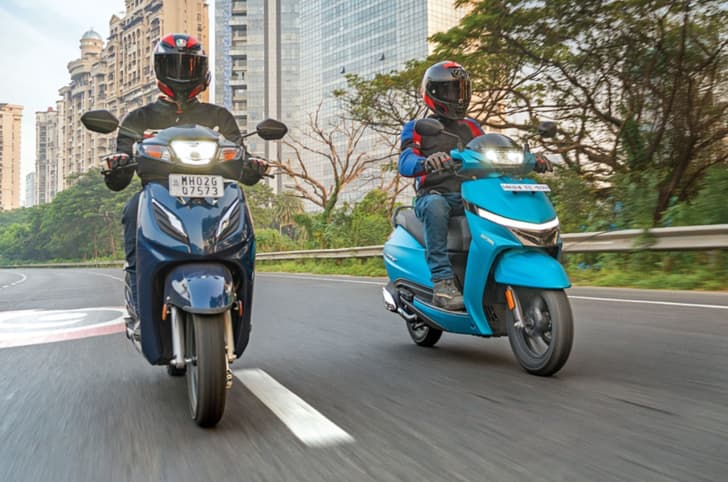




.jpg?w=728&q=75)
